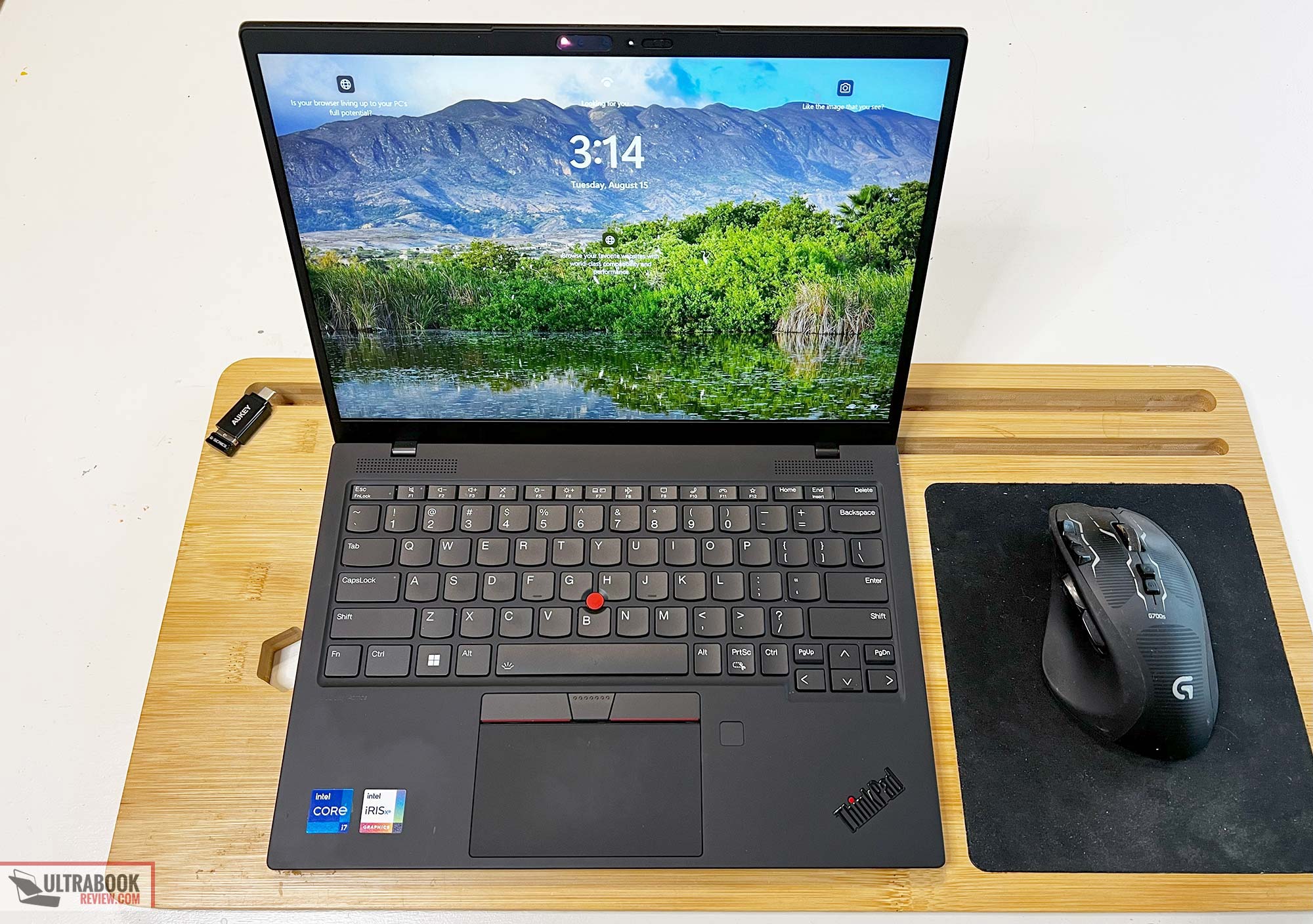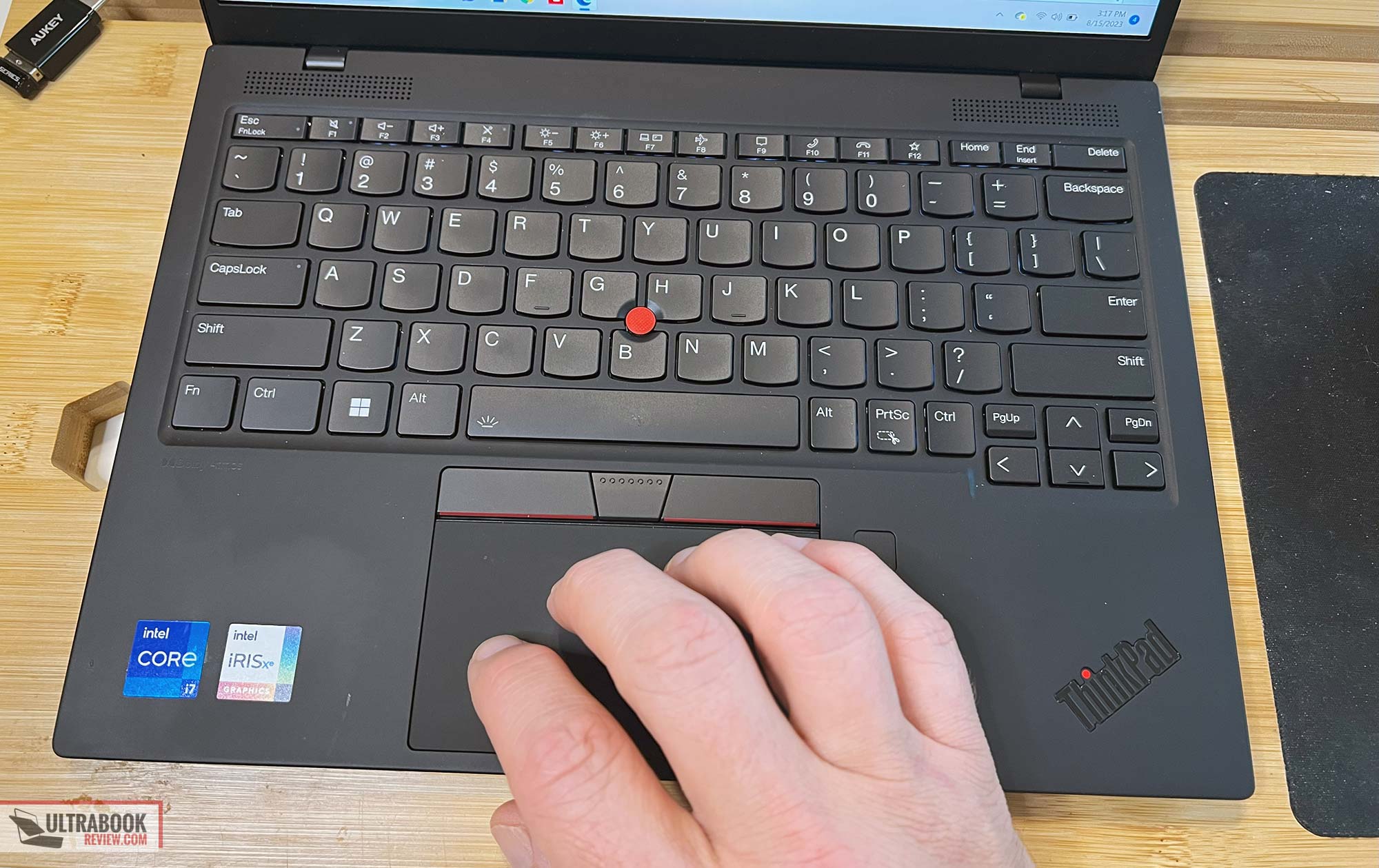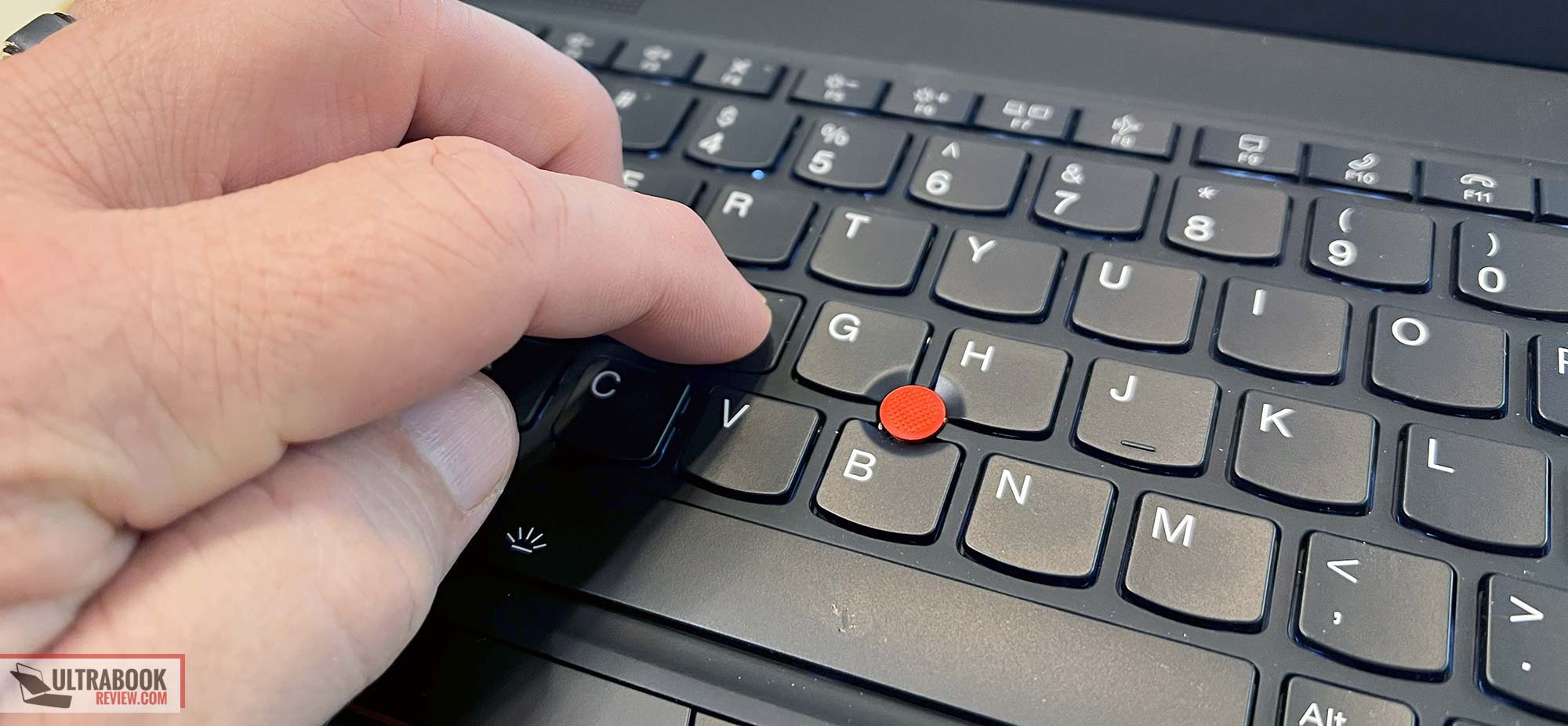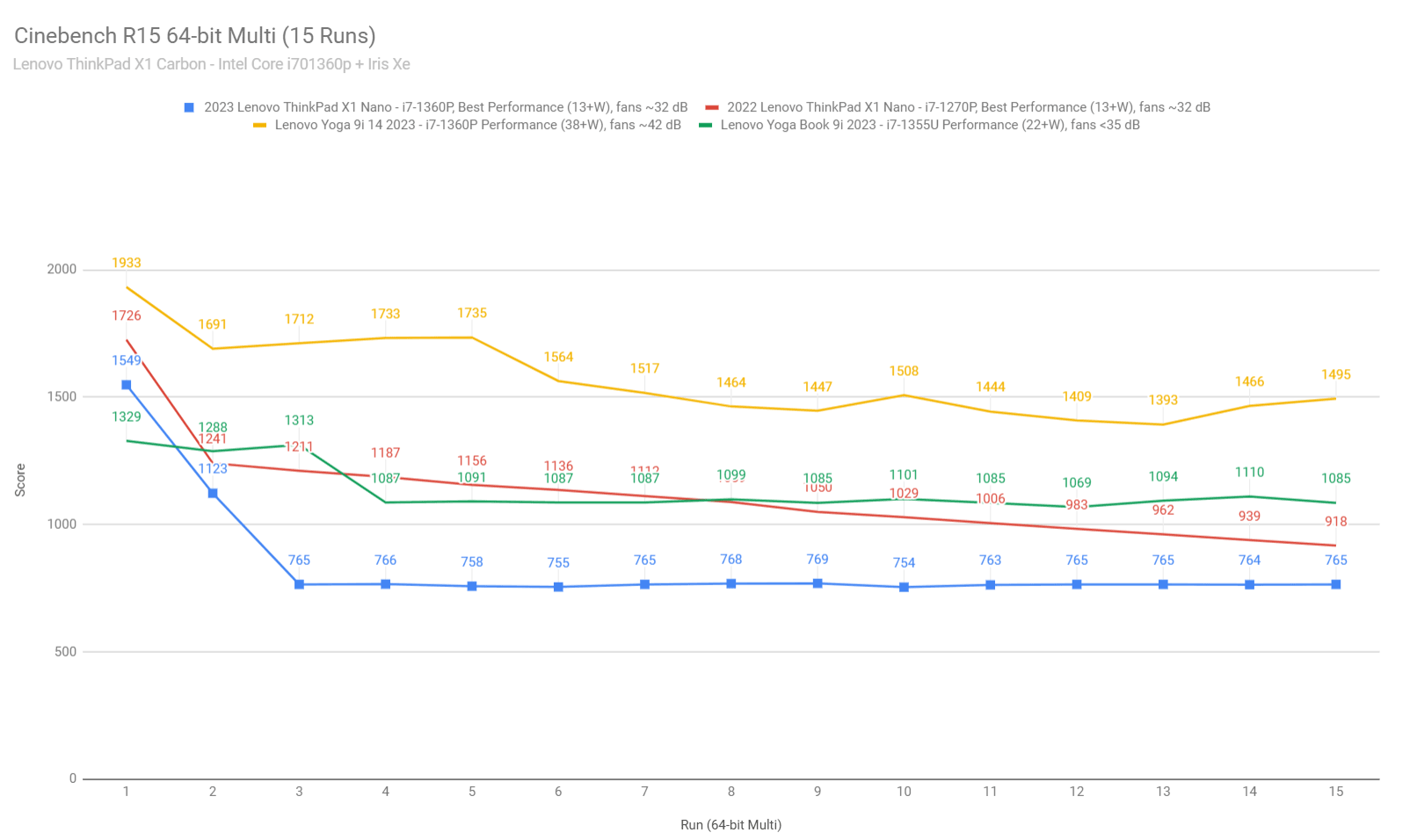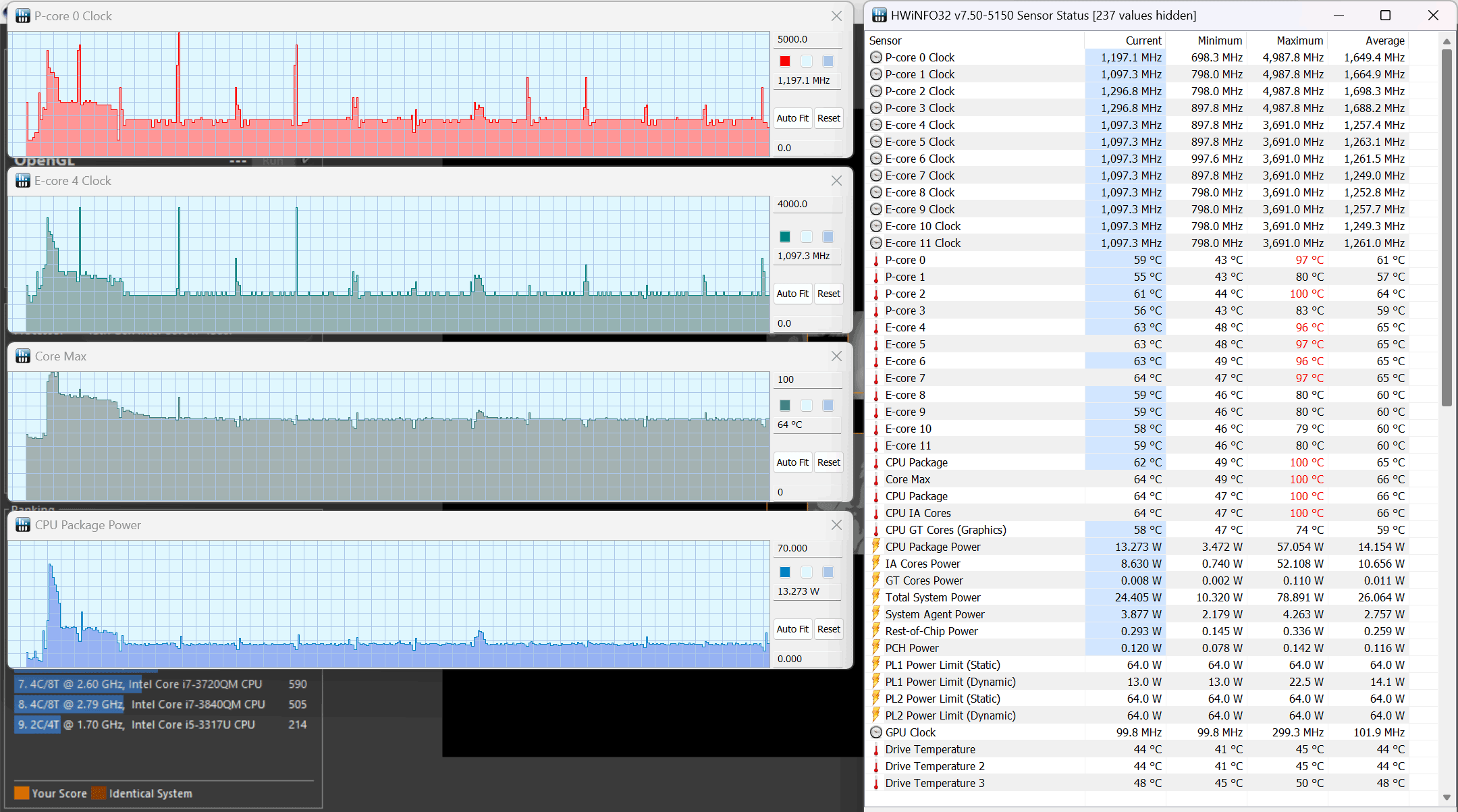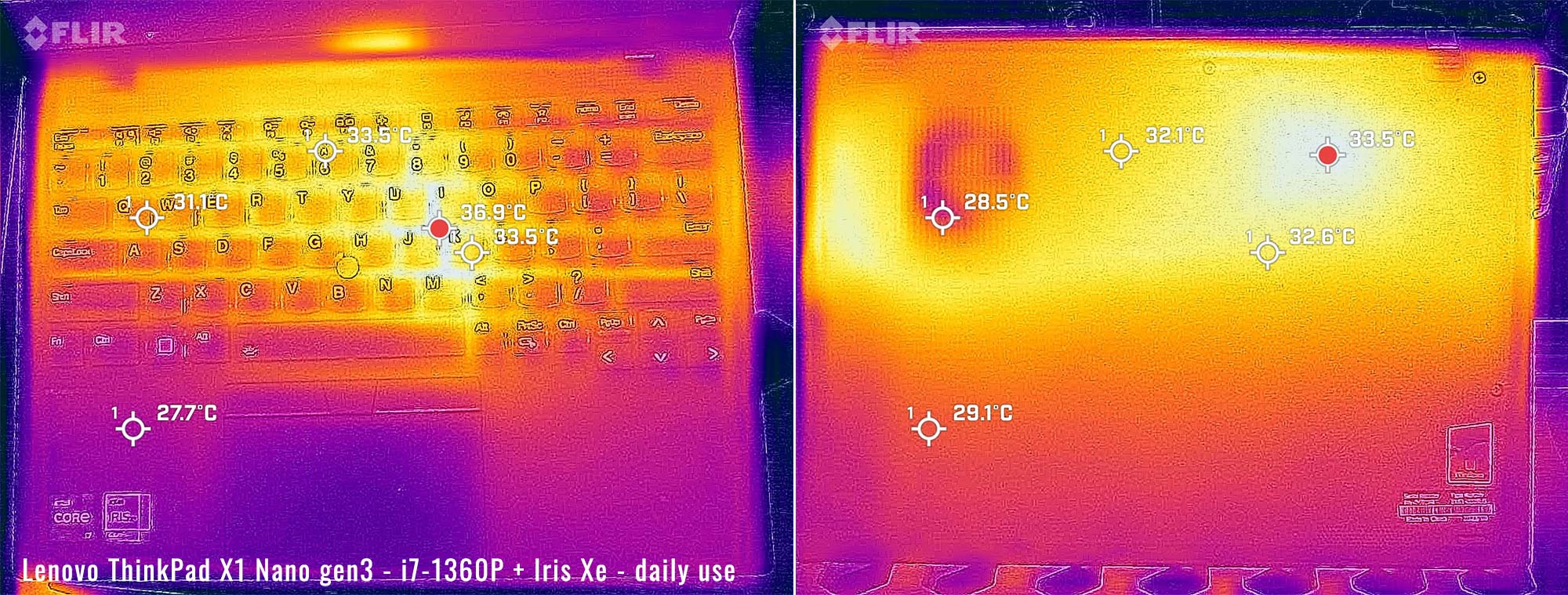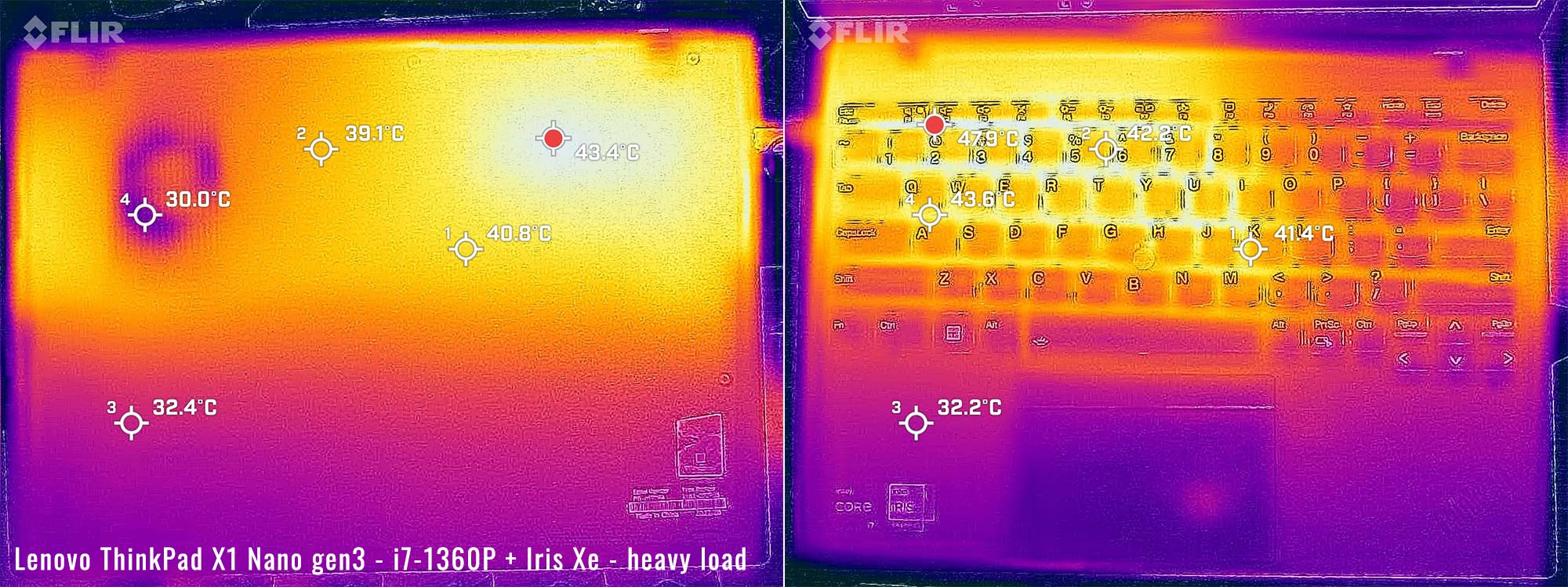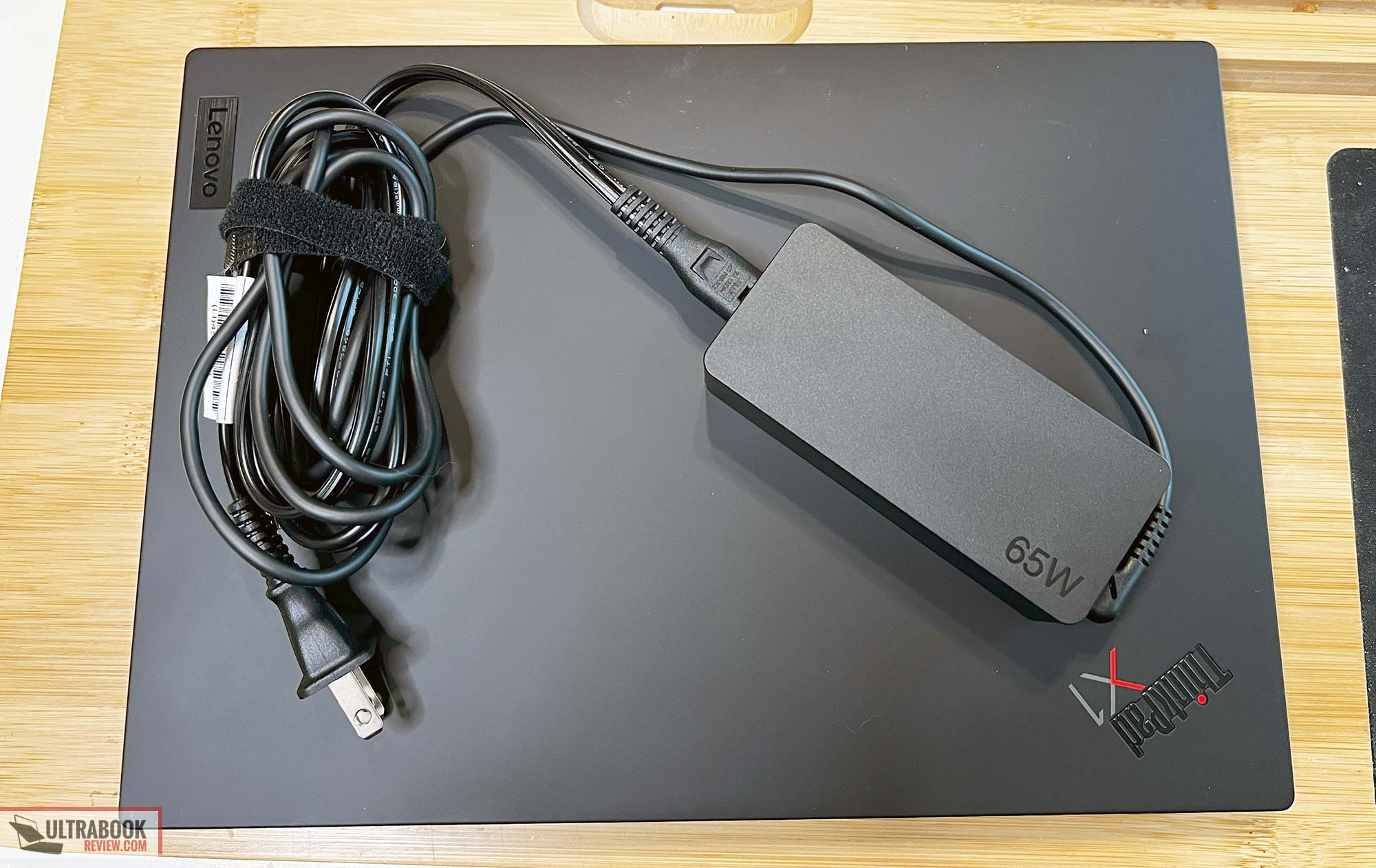The Lenovo Thinkpad X1 Nano is next on my list to grab my attention. This is Lenovo’s lightest Thinkpad available and tries to cram as much as possible into a 13” chassis and yet still keep it thin and light. It’s by no means a high-end computer, but at least the pricing is reasonable.
I’ve spent the better part of the month with this unit, trying to make it my daily driver as much as possible. Unfortunately, there were a couple of instances where it fell short on performance, but that is merely my take because I’m used to using a more powerful machine. But for what it is designed for, which is light business use, it’s fine.
My overall impression is good, but to be honest, I was expecting more from this machine. Particularly because I’ve reviewed the X1 Carbon in the past and I was expecting similar performance and features. But then, the weight and especially the price difference between these models is significant, so you are definitely getting what you pay for on both.
Regardless, while I kind of wonder where this model fits, those looking for a lightweight and reasonably priced business laptop may gravitate toward this one. So let’s dig into the details and see if it’s the right one for you.
Specs as reviewed – Lenovo ThinkPad X1 Nano gen 3
| Lenovo Thinkpad X1 Nano gen3, 2023 model | |
| Screen | 13.3 inch, 2160×1350, IPS equivalent, 60 Hz, touch, matte finish |
| Processor | Intel Core i7-1360P, 12 cores, 16 threads, base clock 3.7Ghz, max turbo 5.0Ghz |
| Video | Intel Xe Graphics |
| Memory | 16 GB LPDDR5-6400Mhz soldered |
| Storage | 512GB M.2 Gen 4 PCIe |
| Connectivity | Intel AX211 Wifi 6E and Bluetooth 5.1 |
| Ports | 2x USB-C Thunderbolt 4 |
| Battery | 49.6 Wh, 65W charger |
| Size | 293.3 mm or 11.54” (w) x 208.1 mm or 8.19” (d) x 14.8 mm or .58” (h) |
| Weight | .99 kg (2.18 lbs) |
| Extras | headphone/mic combo, fingerprint reader, FHD webcam with Windows Hello, quad speakers |
Design and construction
Once I took this laptop out of the box, I immediately noticed just how light it is. It’s a rare thing to have something this light still feel premium and like it won’t break the second I accidentally mishandle it. Very impressive to say the least.
The overall design is very familiar too. The design closely matches what I saw the last time I reviewed the Thinkpad X1 Carbon. In fact, if I didn’t know better, they are close to being indistinguishable.
The handling is close to perfection. Because of the lightweight, this unit is super easy to hold with just a couple of fingers. There’s an adequate angle and spacing so can easily pick it up from any side while closed. And while the unit is open, it’s robust enough to grab it from the corner with just a finger and thumb.
The only thing I wish would be better in handling is that it takes more than one hand to open up. Because it’s so light, the main chassis lifts off the table, so you’ll need a second hand to hold it down. Acceptable, because I’d rather have a robust hinge, especially since there’s a touch screen on my model.
The design of this laptop is like pretty much all the other Thinkpads out there. It’s a deep black color with a matte finish, throughout the laptop. All the surfaces have a soft touch feel to them. But note that this soft touch comes at a price because your fingerprints are more likely to leave a mark.
The lid itself is completely smooth, with the Thinkpad X1 logo in one corner and the Lenovo badge in the other corner. The lid is made of carbon fiber, similar to the X1 Carbon model.
The keyboard deck and the bottom are made of a magnesium alloy, which is apparently 90% recycled material in case you are interested in that stuff. The keyboard and trackpad will be discussed in more detail in the next section. But above the keyboard are a couple of top-firing speakers. There’s also a fingerprint reader to the right of the trackpad.
The bottom of the laptop is very plain. It’s completely smooth with the exception of four footpads and the vent for the air intake on one side. The footpads provide ample height for both handling and ventilation. The second set of speakers is located on the bottom edge towards the user.
Now let’s talk about IO now – or lack thereof. There’s nothing on the front, back, or even the right-hand side of the laptop. The power button is the only thing on the right, which is right behind the exhaust vent.
On the left-hand side, there are only two Thunderbolt 4 USB-C ports. These both support charging and Displayport. The only other thing over there is a headphone/mic combo jack. At least they didn’t exclude that… but yes, it’s a very minimalist design here.
Besides the limited IO, I really like the design Lenovo is offering here. The build quality is exactly what you would expect from a Thinkpad, so if that’s what you are after, you won’t be disappointed. Add in the light weight and easy handling, and now we’re talking about something I’d be proud to carry around the office.
Keyboard and trackpad
Let’s talk about that keyboard and trackpad now. The keyboard looks to be identical to what Andrei reviewed in the X1 Nano gen 2 model last year. In fact, I also thought it was identical to the X1 Carbon’s keyboard too, but I notice it’s very different after using it.
To me, the keyboard feels slightly cramped and it roots from the keys being a little smaller than I’m used to in order to fit this 13” chassis. But after some adjustment, I was able to get used to it. The key feedback is pretty good at least and the key travel is approximately 1.4 mm, which is about what you expect from a laptop this small.
The key layout is identical to pretty much all the Thinkpads these days, so no surprises there. The typical oddity is the Fn and Ctrl keys being reversed, but this can be corrected in the Bios if desired. There are also some extremely small arrow keys, but those are also easy to get used to.
There’s only the white backlight on this keyboard, which is also exactly the same on pretty much every Thinkpad out there. It does come on by default though, which is a problem I’ve seen in the past. There are two levels of brightness and off which are toggled by Fn-Space.
The trackpad is also something that is identical to previous models. It’s glass and operates very smoothly. It’s also a clickpad, with integrated left and right click buttons embedded in the corners. This is redundant to the buttons on top of the trackpad, but those buttons are intended to be used with the Trackpoint, which is standard on all Thinkpad models and is present here as well.
In short, the trackpad is great and works as it should. In fact, because the keyboard is a little on the cramped side, I’d say Lenovo did a really nice job providing effective input devices. Considering this is a business laptop, this is very important.
Screen
The screen on this model is not bad. It doesn’t have all the frills like 100% DCI-P3 or a high refresh rate, but it has what matters for most people who don’t really “need” those things. It’s probably a cost thing, which is fine too.
The resolution is a modest 2160×1350 px, but that’s fine at this size. Realistically FHD is probably fine on 13” screens, but any extra is certainly a plus. I think 4k would be overkill on something this small and would really require scaling anyways.
The viewing angles are spot on though and the image looked crisp and uniform throughout my use. I didn’t notice any backlight bleeding either.
Here are the specifications I measured on my X-rite i1 Display Pro sensor:
- Panel HardwareID: Lenovo LEN4076 (Model MND007ZA1-3)
- Coverage: 96.8% sRGB, 67.1% AdobeRGB, 69.1% DCI-P3;
- Max brightness in the middle of the screen: 452 cd/m2 on power;
- Gamma: 2.2
- Contrast at max brightness:1614:1
- Native white point: 6275 K;
- Black on max brightness: 0.28 cd/m2.
Pretty nice brightness and contrast ratio, which makes it viable to use this laptop outdoors or in a brightly lit room. There’s not much more to want from this screen, except maybe a faster refresh rate, which is currently locked at 60Hz. But for a business laptop, this is likely all you’ll need.
The last thing that I almost forgot to mention is the touchscreen. It’s forgettable but in a good way because you almost don’t even notice you have it because of the matte finish. But it is there if you need it, and when you do it works very well. Pen input isn’t supported, though.
Hardware and performance
This Thinkpad X1 Nano comes with an Intel Core i7-1360P, which is a 12 core processor that boosts up to 5.0Ghz. This processor operates on 4 performance cores with 8 efficiency cores to maximize efficiency while on battery. This model is paired with 16GB of soldered RAM, which is probably enough considering the hardware in this laptop, but could be limiting for those that do a lot of multitasking.
The SSD on this model is a rebranded Union Memory SSD, 512GB in size. It’s a decent drive which is gen4 in name only but has more like gen3 speeds. Keep in mind that even though this is upgradable, it’s not a standard-sized SSD. So if you plan to update this after buying, make sure your SSD is the same size, or else it won’t fit.
Overall, the performance is a mixed bag for me. I did try to use this as my daily driver, but it kind of falls short of what I expect out of a laptop. Some apps just felt a little sluggish to me. But the programs I typically use are a little more high-end than most people so I could be a little over-critical here. For typical day-to-day use and office applications, this laptop was just fine.
But let’s dig into the performance and see where this one stands.
I took some synthetic benchmarks to get an idea of how well the CPU performs. Here’s what I got in High Performance mode:
- 3DMark 13 – Fire Strike: 3778 (Graphics – 4179, Physics – 12094);
- 3DMark 13 – Time Spy: 1395 (Graphics – 1244, CPU – 4474);
- 3DMark 13 – CPU Profile: Max-2986, 16T-2433, 8T-2132, 4T-1750, 2T-1261, 1T-792
- Superposition: Medium: 2509
- GeekBench 5: Single-Core: 2508, Multi-core: 9651;
- CineBench R15: OpenGL 89.57 fps, CPU 1549 CB (best run), CPU Single Core 209 CB (best run);
- CineBench R23: CPU 8482 pts (best run), CPU 5544 pts (10 min loop test) CPU Single Core 1501 pts;
Take these readings with a grain of salt. While these results were are alright, they tend to vary wildly between runs and it took a lot of spacing between runs to get anything near consistent.
That’s because the CPU in this laptop kicks in strongly at 50+ W for a few seconds, but then it quickly drops and stabilizes at 13W in sustained activities, due to the design of this device. That’s illustrated by the Cinebench R23 results above, where you can clearly notice the difference in performance between the single-loop and 10-min loop tests.
That’s also illustrated by the Cinebench R15 loop test below, where the Scores drop pretty much 50% once the power stabilizes. And that happens quickly!
And here are the HWinfo logs that show the TDP progression in sustained loads.
Bottom point, this 3rd-gen ThinkPad X1 Nano is one of the lowest-power implementations of the Intel Core i7-1360P hardware available in stores today, so don’t expect it to match the performance of other devices with the same specs. For comparison, the Lenovo Yoga 9i is significantly faster, despite the two being similar configurations. And even devices built on the lower-end i7-1355U will outperform this X1 Nano in sustained loads, such as the Lenovo Yoga Book 9i or the Asus ZenBook S13.
To compare further, many of these results are the same and some are even worse than what Andrei reviewed in the gen 2 model last year. On paper, I wouldn’t have expected a drastic increase or anything, but it should have been at least a little better. I can’t really explain it other than the CPU just needs to run at a lower wattage in order to stay cool in this chassis.
Note (Andrei): The differences are due to the fact that the system power-limits this gen3 Nano much quicker than on the gen2. The hardware gets capped to straight to 13W after a minute or two, while on the previous generation the cap was more gradual and took 10-15 min to reach the 13W limit. This behavior might change with future software, but as of right now (Aug 2023), it is what it is.
I also took some benchmarks with a few games, varying in age. See below for my results:
| FHD+ | |
| Doom Eternal (Low settings) | 17 fps avg, 10 fps low |
| Skyrim (Ultra, FHD+) | 44 fps avg, 28 fps low |
| The Witcher 3: Wild Hunt (FHD+, low Preset, Hairworks Off) | 20 fps avg, 9 fps low |
| Portal Reloaded | 60fps |
Clearly this laptop isn’t meant for gaming. But if you wanted to play some of the older titles like Skyrim or Portal, this would be more than sufficient. AAA titles are going to run pretty rough though, so don’t count on that.
Noise, Heat, Connectivity, speakers, and others
This laptop is limited to a minimalist single-fan single-heatpipe cooling system, mostly because of its size. I’m positive they could have added more, but Lenovo was aiming for the lightest laptop possible, so an extra heat pipe or fan would counter that goal.
The cooling system works though, especially if you keep your usage to light and medium tasks. For light use, such as internet surfing or word processing, the CPU stays in the 40-50c range and the fan noise is practically inaudible. It does kick on every now and then, but the noise levels average around 26dB(A).
Heavier internet usage results in CPU spikes around 83C with average temperatures being around 60C. During this testing, I measured the fan noise to peak at 30dB(A)
Under extreme loads such as a demanding game, the CPU spikes as high as 100C and then throttles. Average temperatures end up settling around 75C though so it’s really just the spikes that are of short-lived concern here. The maximum fan noise during this test was 36dB(A).
I also took some thermal readings on the external of the chassis. The first test was watching a FHD video on Netflix while on battery. Nothing of concern there at all – it felt as cool as it is light and I barely notice it on my lap.
Gaming while plugged in, though, ramps those external temperatures up quite a bit. I was actually ok with this on my lap, mainly because it is so small and light, but it might be a little too hot on bare skin, so be careful there. Again, this isn’t really for gaming so unless you are pushing this laptop to extremes here, you probably won’t need a laptop tray.
*Daily Use – streaming Netflix for 30 minutes, Better Battery Mode, fans at 0-30 dB
*Gaming – High Performance mode – gaming for 30 minutes, fans at 32 dB
Moving onto connectivity – we’re looking at the AX211 on this laptop, which seems to be very popular on almost every model I’ve tested this year. And this is a good thing because it’s an excellent module. I reached 608Mbps while 25ft from my router. Excellent results here. Plus I had no drops throughout my usage.
Bluetooth also worked very well, and is pretty much a must-have considering the lack of full-sized USB ports on this machine. I used my headphones and mouse on Bluetooth pretty much the entire time I had the machine and was fine with the performance.
The speakers on this model are surprisingly good. The top firing ones are super tiny and offer little more than support for the larger bottom firing drivers. But together, they produce a reasonably full sound for such a small laptop.
I measured the maximum amplitude to be 80dB(A) in my test, which is pretty good to me. Certainly good enough to watch a movie or hold a Teams call without headphones. Bass was detectable as low as 100Hz, which is also good, considering the size.
The camera is FHD on this model. It’s good enough and takes decent photos, but it could be a little sharper in my opinion. The color reproduction is good and it seems to take decent shots in low lighting. It’s certainly good enough for a conference call and is a small step up from your standard HD shooter.
The webcam also doubles as an IR camera for Windows Hello. The feature works perfectly and also includes the software to put the laptop to sleep when you walk away and then turn it back on and unlock it when you come back. And of course, if you want privacy, there is a physical webcam shutter.
A fingerprint reader is also present, just in case you want to permanently disable that camera and still have biometrics. It also works perfectly fine and is in a logical place. I much prefer this implementation to the ole fingerprint reader in the power button trick.
Battery life
The Lenovo X1 Carbon has a 49.6 Whr battery. This is small by today’s standards, but again, Lenovo was shooting for as light as possible and batteries are typically the heaviest component besides the chassis. I took a series of battery life tests with the brightness at 50%, which is about 95 nits. Here were my results:
- 6.7 W (~7 h 24 min of use)– idle, Best Battery Mode, screen at 0%, Wi-Fi ON, backlighting off;
- 10.6 W (4 h 41 min of use)– text editing in Word with light internet use, Better Battery Mode, screen at 50%, Wi-Fi ON;
- 8.5 W (~5 h 50 min of use)– 1080p 60Hz Youtube fullscreen in Chrome, Better Battery Mode, screen at 50%, Wi-Fi ON;
- 11.33 W (~4 h 23 min of use)– 1080p Netflix fullscreen video in Chrome, Better Battery Mode, screen at 50%, Wi-Fi ON;
- 15.5 W (~3 h 12 min of use)– heavy browsing in Chrome, Better Performance Mode, screen at 50%, Wi-Fi ON;
- 22.9 W (~2 h 28 min of use)– Gaming – Witcher 3, Maximum Performance Mode, 60fps cap, screen at 50%, Wi-Fi ON.
Nothing special here, but it’s not necessarily bad either. Considering the battery is so small, it’s nice to know you can at least do 4 hours of work on this machine before needing to plug it in. The CPU running at a low wattage with the efficiency cores plus the 60Hz screen keep the drain low. But don’t expect to get a full day’s work on a single charge.
When you do need to charge though, the power brick is 65W and is able to charge your laptop in just about half an hour. It’s a pretty small brick too, so it pairs well with this light machine. Good grades on this aspect of the laptop from me.
Price and availability- ThinkPad X1 Nano
My exact model is available on CDW for $1715. But this variant or other configurations should also be on Amazon soon as well, so check this link to see if it’s available.
Lenovo also has other models this year, with and without touch support, and also some different CPUs. The i5 model with a 256GB drive is close to $1000 right now, which is a pretty good value. If you’re not set on touch support, perhaps that is a better deal and you can just add a different SSD if you need more space.
Final thoughts- Lenovo ThinkPad X1 Nano review
Like I said at the beginning of the article, this Lenovo ThinkPad X1 Nano is a pretty good ultrabook. But I was somehow expecting more in the performance department. Especially since my benchmarks were so close to Andrei’s on the gen 2 model last year, I think Lenovo kind of missed the mark on providing an ample reason to choose this model over the last one.
The inconsistencies in my benchmarks were also a red flag that this machine might be on the fine line of throttling during extended use. I would certainly caution power users to take my benchmarks with a grain of salt and test this laptop thoroughly before committing to it. The average user probably wouldn’t notice what I mean though.
That aside, there are a lot of good aspects to this laptop that I respect. The sheer portability of this machine is amongst the best out there, for example. It’s not only super light, but also well built – a combination rarely found. It’s also very quiet and a fine performer when doing light tasks such as web surfing and typical office apps.
I’ll also give credit for having a good set of speakers and a decent webcam paired with a good microphone array. If you plan on using this laptop for work and making a lot of web calls, this is a great portable solution to have.
The only other thing I can really ding this laptop for is maybe the battery life. The battery is small and you’ll find yourself limited if you need to push the CPU beyond light tasks. Just make sure to have a USB charger available and you’ll be fine.
But between that and the low-wattage CPU, I can’t see anything else not to like. The price of the top-specced configurations might scare you, but at least there are cheaper model options and it’s certainly cheaper than the slightly larger X1 Carbon model. If you need the extra CPU power btw, that’s the option I’d consider over this one.
So that wraps up my review on the 2023 Lenovo ThinkPad X1 Nano. If this is your thing, I don’t think you’d be disappointed. But if you want to save a few bucks, take a look at the sales on the Gen2 models too. My hunch is you’ll be equally as impressed. If you do get one, please shoot us a comment below with your thoughts.

